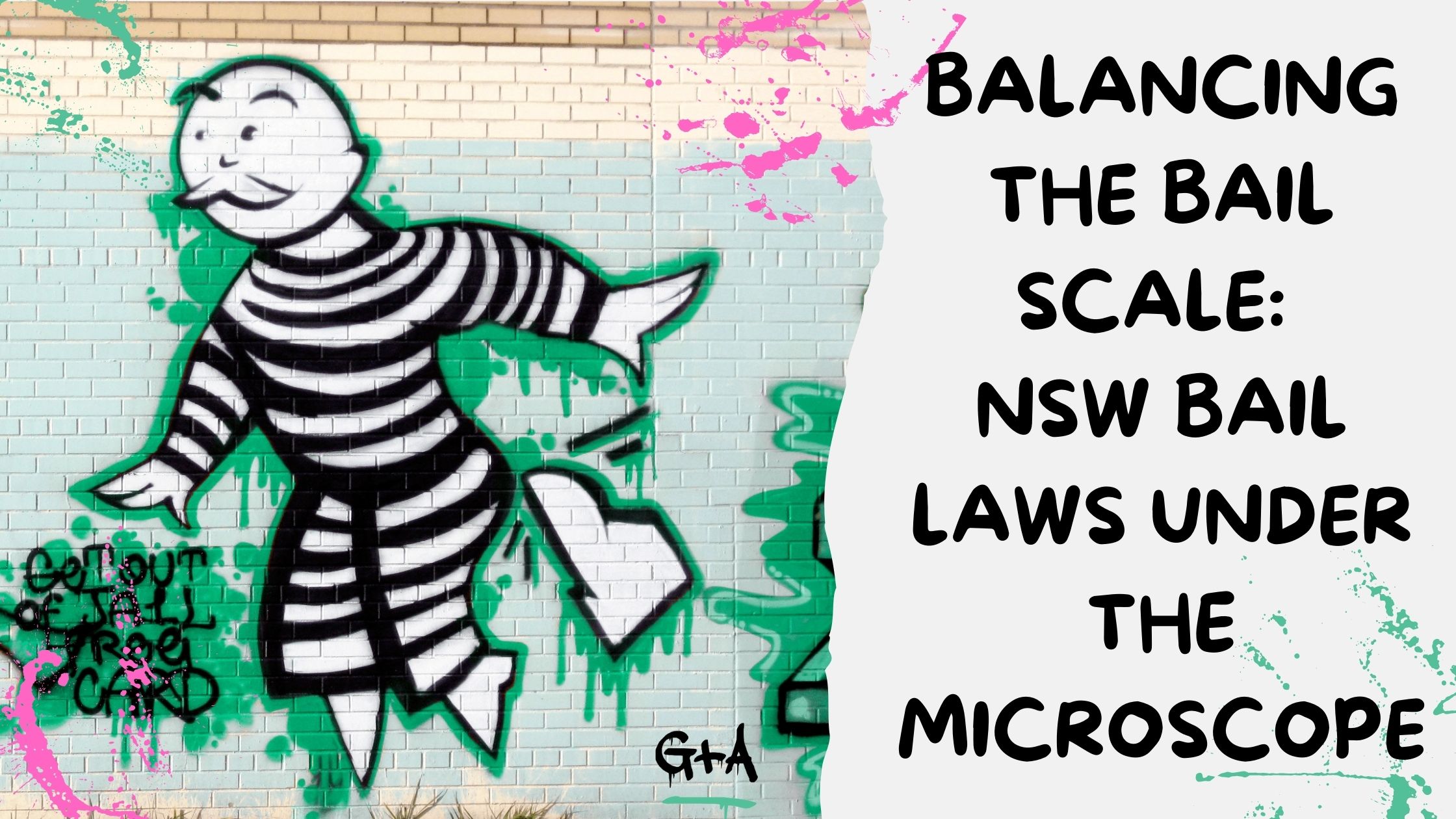NSW Bail Laws Under The Microscope
The NSW Judicial Commission; independent statutory body that is part of the judicial arm of Government under the Judicial Officers Act 1986. The Commission aims to assist the Courts to achieve consistency in sentencing. Educate and train judicial officers, examine complaints against judicial officers, provide advice to the Attorney General and improve the overall performance of the judicial system.
NSW bail laws are under the microscope as many judicial and law enforcement members including the NSW Police Minister believe that the existing bail laws are too lax. A report prepared by the NSW Judicial Commission called ‘Navigating the Bail Act’ suggests that the bail laws are far too simple and appear to have too many loopholes. The report also discusses whether ankle bracelets are effective.
It appears that the report is receiving a lot of support from judges, magistrates, and the like.
Supreme Court Justice Robert Beech-Jones believes that wearing an ankle bracelet as a condition of bail doesn’t necessary remove the risk of escaping. That “the delay between notification of any violation and action being taken by police was such that the accused could leave the jurisdiction”, according to the report.
Supreme Court Judge, Justice Ian Harrison, said in a Judgment that parliament should have “offered guidance” to the judiciary after changing the bail laws in 2014. When they added the “show cause” offence regime, where the presumption of liberty is reversed. A person must be refused bail unless they can “show cause” otherwise for certain offences.
The report found that judges and magistrates believe their colleagues let 64.5 % of offenders who skip bail off with a slap on the wrist. Quoting “two bail applications with very similar facts may result in different outcomes….the mechanics of the bail provisions and the separate tests to be applied often require a level of mental gymnastics.”
According to figures from the NSW Bureau of Crime Statistics and Research between May 2014 and June 2019. A total of 14,425 offenders were sentenced for 20,914 fail to appear offences in the state’s Courts.
Moreover, close to half of the bail breaches were followed by further offending with the most common offending being breaches of an apprehended domestic violence order (46.5%). “Other driving offences” (14.6%). Domestic violence-related assault (13.5%. Harassment, threatening behaviour and private nuisance (12.8%) and possession and/or use of illicit drugs (10.1%).
NSW Police Minister David Elliot, believes the State’s bail laws need strengthening. “We appeal to the courts to make sure they keep community safety front of mind whenever they are making a bail decision”.
There have recently been 3 major bail fails that sparked the review.
The first being Jason Williams. Williams, has been accused of dragging a 56-year-old woman on the ground and later raping her. There was even video footage of the two walking home from Panania Diggers Club in Revesby. Mr Williams was charged with one count of sexual assault. He was granted bail at Bankstown Local Court on the condition he refrain from drugs & alcohol and did not try to contact the alleged victim.
The second was the case of alleged drug lord Mostafa Baluch, who was on the run from police after allegedly removing his ankle bracelet. He was granted bail by Sydney’s Central Local Court on drug importation charges. Mind you – these charges carry a maximum life in jail sentence. He was later caught by police after 16 days on the run. Later he was found hiding in a Mercedes inside a shipping container, driving across the Queensland border. He has since been extradited back to Sydney to be brought before the Court.
Lastly, Stanley Russell was shot and killed by police who were visiting his home in Western Sydney. He allegedly approached police with an axe and knife, when a physical altercation ensued, and he was shot. The Indigenous man has been reported to have been out on bail and missed a Court attendance resulting in the warrant for his arrest. Sadly, he is the second person in his family to die in custody. His brother Eddie Russell was found dead in Long Bay Jail in 1999.
All three of these cases highlight the potential different shortfalls of the current bail laws. Rather, the shortcoming in assessing risks to the community. However, the difficulty is that Police do not always get it right.
There are persons wrongly accused:
- Charged with the wrong (more serious) offences
- Those charged with relatively minor offences with a need to be released for the support of their dependants,
and so on.
On the other hand, the community needs protection. It is a fine balancing act to follow; perhaps the answer may be in additional guidance or restrictions as to how the law is applied and cases assessed. Rather than tighter laws per se. It will be interesting to watch these developments no doubt.




